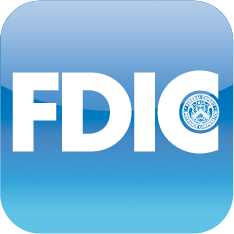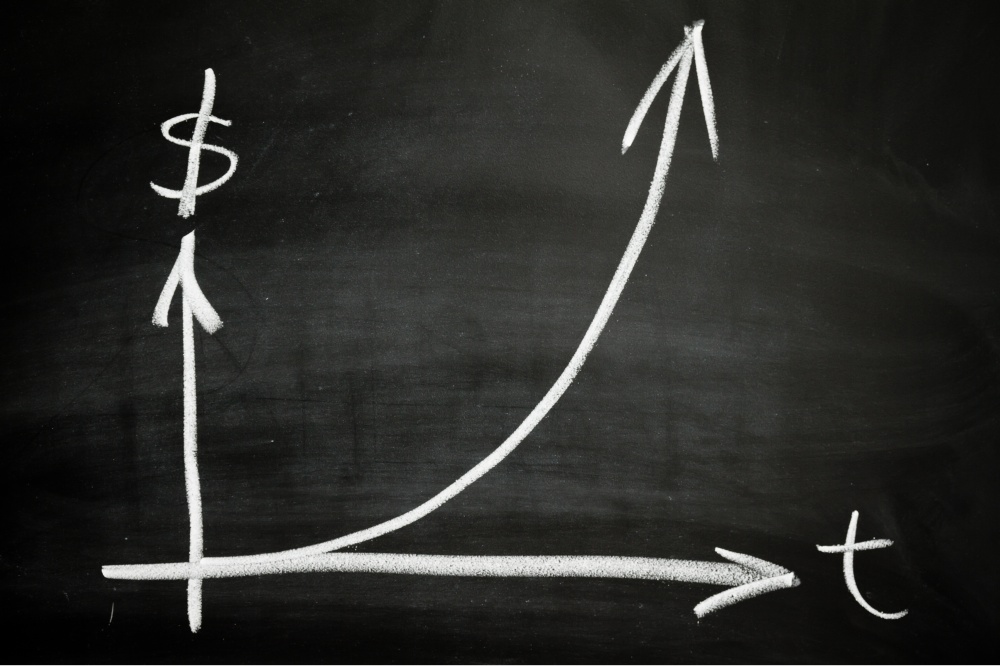Cash investments, also called cash equivalents, are short-term investments that earn interest, figured as a percentage of your principal.
One key difference between cash investments and other investments is their liquidity, which means they can be converted to cash quickly and easily with little or no loss of value. For example, if you invest $1,000 in a cash equivalent, you can expect to get $1,000 back, and perhaps some interest as well. If you invest $1,000 in a mutual fund, you might be able to sell your shares for more than $1,000, but you might also have to sell for less.
As part of your overall portfolio, cash investments can provide a buffer against fluctuations in the value of your more volatile assets, such as stocks. Keeping a limited amount of your portfolio in cash equivalents also lets you take advantage of new investment opportunities as they arise. And you can use cash investments as part of your emergency fund to cover unexpected expenses.
Types of cash equivalents
While all cash equivalent investments are similar in providing liquidity and price stability, there are some important differences among the four major types of investments in this category: certificates of deposit (CDs), US Treasury bills (T-bills), bank money market accounts, and money market mutual funds.
Some cash equivalents, such as money market accounts and money market funds, offer greater liquidity — or access to your money — than others.. And some cash investments are insured while others aren't. The advantage of insurance is that you can be confident that your money is safe. But the drawback is that insured accounts often pay a lower rate of interest than uninsured accounts.
Some experts also consider short-term bond funds as cash equivalent investments since they are highly liquid and their value is fairly stable. But unlike any other cash equivalents, you can realize capital gains or capital losses when you sell these funds.
Certificates of deposit
Certificates of deposit (CDs) pay interest for a fixed term, usually at a fixed rate. The shortest CD term is usually three months and the longest is five years. In general, the longer the term is, the higher the rate the CD pays. That's to compensate you for tying up your money for a longer period. You can always withdraw money from a CD before its maturity date, but you may forfeit some or all of the interest you expected to earn.
Many CDs require a minimum deposit, sometimes $1,000 or more, but you generally must deposit at least $100,000 to get a higher rate for the same term.
Buying CDs
Most local and national banks issue CDs, although you can often get a higher interest rate from an online, or virtual, bank. You may also be able to buy CDs from credit unions, where they're sometimes called share certificates. Most credit union share certificates are insured and may pay more interest than bank CDs.
Some brokerage firms sell CDs as well, usually slices of a large CD the firm has purchased from a bank. You may get a higher interest rate, based on the rate the underlying jumbo CD pays. And you don't have to hold your portion of the CD to maturity as the firm can always sell it to another client at market price, although you may receive less — or more — than you paid for it. The tradeoff is that you may have to pay a sales charge, or commission, which you don't pay when you buy a CD from the bank. In addition, some but not all, brokered CDs are FDIC insured.
Investors should be aware that there are international bank CDs on the market that do not have the equivalent of FDIC insurance.
US Treasurys
US Treasury bills (T-bills) are short-term government debt securities that are available in 4-, 13-, 26-, and 52-week terms. They're considered cash investments because of their short duration and their US government backing. In fact, they're sometimes described as risk-free investments, and serve as the standard against which the risk posed by other investments is measured.
The interest you earn on a T-bill is the difference between the discounted price you pay to buy, which is always less than the $100 face value, and the full face value, which is paid at maturity.
The US Treasury sells T-bills directly to both institutional and individual investors. To buy as an individual, you open a Treasury Direct account and have the purchase amount debited from a bank account you designate. When the bill matures, you can renew it or have its value deposited directly into the designated account. You can also buy and sell T-bills through a broker, though that would mean paying a commission on each transaction.
|
Type |
Access |
Duration |
Insured |
|
Certificates of deposit (CDs) |
Money available with early withdrawal penalty likely |
3 months to 5 years |
Bank CDs FDIC insured |
|
US Treasury bills (T-bills) |
Can be sold at any time, though at a potential loss before maturity |
4-, 13-, 26-, and 52-week terms |
Guaranteed by US government |
Money market investments
Money market accounts and money market funds, offered by banks and mutual funds respectively, resemble checking accounts in that they offer the highest degree of liquidity. For example, you can write checks against your account, withdraw cash, or have the money transferred between accounts the same business day.
But money market accounts and funds pay higher interest rates than interest-bearing checking accounts or regular savings accounts because they typically require higher minimum deposits.
Money market accounts are available at most local, national, and online banks. Most accounts have check-writing privileges, though there's a limit on the number of checks you may write per month without incurring a fee. Each check may have to be written for a minimum amount set by the bank. And you may be charged a fee or lose some interest if your account balance falls below the bank's minimum.
Money market funds are available from most mutual fund companies, either as taxable or tax-free accounts. All money market funds make very short-term investments as they seek to maintain their value at $1 a share. Taxable funds buy various types of corporate and government debt, while tax-free funds buy municipal debt.
Most money market funds let investors write an unlimited number of checks against their accounts each month, though each check must be for a minimum amount — often $500. While you don't pay a sales charge to buy a money market fund, there may be a fee if your account value drops below a certain minimum.
|
Type |
Access |
Maturity |
Insured |
|
Money market mutual fund |
Easy access and fast transfers |
None |
SIPC insured up to $500,000 may apply in case of brokerage firm failure, but full restitution may not be made |
|
Bank money market account |
Instant access |
None |
FDIC insured to $250,000 |
With the exception of the interest on Treasury bills, which is exempt from state and local taxes, the interest you earn on cash equivalents is almost always taxable at your regular income tax rates unless you own the investment within a tax-deferred or tax-exempt retirement or education savings account.
Insured investments
Many cash investments offer the added security of government insurance. Bank money market accounts and time deposits, such as certificates of deposit, are both insured by the Federal Deposit Insurance Corporation (FDIC) to a limit of $250,000 per depositor per bank.
Most money market mutual funds, on the other hand, are not insured by the FDIC, though there is SIPC coverage in the case of brokerage firm failure when the account is held by a broker-dealer who is a member of SIPC . US Treasury bills aren't insured, but they are backed by the federal government, which can raise taxes to repay what it owes.
FDIC coverage limits are $250,000 per depositor per bank for individual, joint, trust, and self-directed retirement accounts, such as IRAs, SEP IRAs, and Keogh plans. Depending on the number of accounts you have at your bank or banks, you may be covered for significantly more than the $250,000 limit.
Interest vs. yield
The interest income you earn on cash investments may be calculated in two ways:
It may earn simple interest, which means the interest is figured on your principal alone or it may earn compound interest, which means that the interest you earn on the investment also earns interest.
How the interest is calculated will affect the yield, or the rate of return on your investment. The more frequently the interest is compounded, the higher the yield.
Doing the math
For example, if you had $5,000 in an account that paid 5% annually in simple interest for five years, you'd earn $250 a year, for total interest of $1,250. In this case the interest rate and the yield are the same — 5% per year.
But the same $5,000 investment paying 5% compound interest for five years would produce a total of $1,381.41 in interest. Because you're earning interest on your interest, the yield — 5.52% per year — is higher than the interest rate.
However, unless you're investing a large amount of money, it's probably not worth chasing after small differences in yield, since the costs of research and transferring your money may outweigh the nominal increase in earnings.
|
$5,000 invested at 5% interest |
Compound (annually) |
Simple |
|
Start |
$5,000.00 |
$5,000.00 |
|
After 1 year |
$5,250.00 |
$5,250.00 |
|
After 2 years |
$5,512.50 |
$5,500.00 |
|
After 3 years |
$5,788.13 |
$5,750.00 |
|
After 4 years |
$6,077.53 |
$6,000.00 |
|
After 5 years |
$6,381.41 |
$6,250.00 |
|
Growth |
27.6% |
25% |
|
Annualized rate |
5.52% |
5% |
Your cash allocation
How much of your portfolio should you hold in cash equivalents? It depends on your goals and how long you have to meet them. If you have major expenses, such as college tuition or a down payment on a house that you'll have to cover in the next two or three years, you'll want to keep a substantial amount of the money you've set aside for those costs in nonvolatile cash investments.
That's because your portfolio may not have time to recover from a potential market downturn, and you don't want to risk cashing out a substantial portion of your portfolio at a loss. Even so, you may still want to keep a limited percentage of your short- and medium-term investments in stocks or stock mutual funds for the potential growth they may provide.
Your next move
It can be smart to put a certain amount of cash aside — say 5% to 10% of your long-term portfolio — to take advantage of new investment opportunities you've researched, or so that you can invest the same amount on a regular schedule, say every month, or every quarter. But in general, you'll want to keep the majority of your long-term portfolio invested for growth, in stocks and stock funds and, to a smaller extent, in higher-yielding bonds.
Rainy day fund
Regardless of how you allocate your investment portfolio, most experts agree that it's essential to keep a certain amount of cash on hand for emergencies. Most financial advisers encourage people to set aside three to six months' worth of income in accessible liquid accounts.. You can tap into your rainy day fund when you have unforeseeable expenses, whether that's the cost of a new transmission for your car or emergency medical expenses for yourself or a member of your family.
Other experts recommend keeping a portion of your emergency fund in a balanced portfolio of stocks, bonds, and mutual funds, rather than solely in cash equivalents. They argue that you risk losing too much buying power to inflation if you have all of your emergency fund in cash equivalents. And they point out that you may be able to charge the costs to a credit card until a short-term investment matures or the market goes up. However, if you need all of the money on short notice, you might have to sell at a loss.
Investing vs. saving
Cash investments are an effective way of managing your money to meet short-term goals and to provide a safety net for emergency expenses. Because cash investments are considered low risk, they generally pay modest interest rates — usually not enough to offset the combined effects of inflation and taxes on your investment.
For example, if you put $10,000 in a money market account earning 4% interest, you'd accumulate $20,300 after 18 years. If inflation averaged 4% per year, your account would actually be worth $10,150. After taxes, you'd have considerably less buying power than when you started.But if you'd invested the money in a portfolio of stocks earning an average of 8% for 18 years, you'd have $40,000. After accounting for inflation, you'd still have $20,000, or twice what you started with. Plus you'd pay taxes on your earnings at the lower long-term capital gains rate.
Inflation
The rate of inflation varies from year to year and rises and falls depending on several factors, including the economy and the strength of the US dollar overseas. Since 1926, the inflation rate has averaged 3% annually. That includes the high point in 1980, when it hit 14%, and several years when it hovered around 1%.
© 2016 by Lightbulb Press. All rights reserved.
